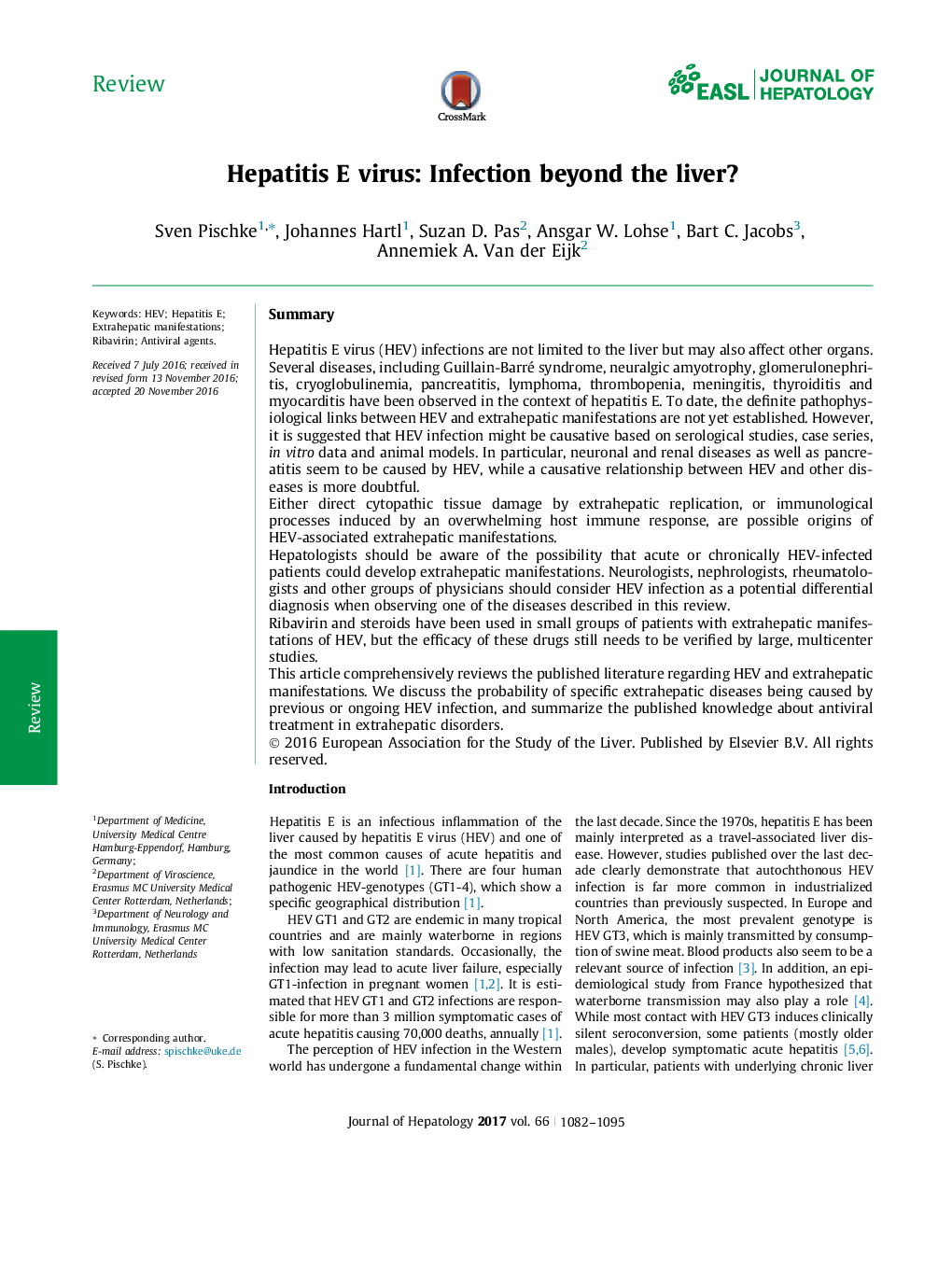| Article ID | Journal | Published Year | Pages | File Type |
|---|---|---|---|---|
| 5660766 | Journal of Hepatology | 2017 | 14 Pages |
SummaryHepatitis E virus (HEV) infections are not limited to the liver but may also affect other organs. Several diseases, including Guillain-Barré syndrome, neuralgic amyotrophy, glomerulonephritis, cryoglobulinemia, pancreatitis, lymphoma, thrombopenia, meningitis, thyroiditis and myocarditis have been observed in the context of hepatitis E. To date, the definite pathophysiological links between HEV and extrahepatic manifestations are not yet established. However, it is suggested that HEV infection might be causative based on serological studies, case series, in vitro data and animal models. In particular, neuronal and renal diseases as well as pancreatitis seem to be caused by HEV, while a causative relationship between HEV and other diseases is more doubtful.Either direct cytopathic tissue damage by extrahepatic replication, or immunological processes induced by an overwhelming host immune response, are possible origins of HEV-associated extrahepatic manifestations.Hepatologists should be aware of the possibility that acute or chronically HEV-infected patients could develop extrahepatic manifestations. Neurologists, nephrologists, rheumatologists and other groups of physicians should consider HEV infection as a potential differential diagnosis when observing one of the diseases described in this review.Ribavirin and steroids have been used in small groups of patients with extrahepatic manifestations of HEV, but the efficacy of these drugs still needs to be verified by large, multicenter studies.This article comprehensively reviews the published literature regarding HEV and extrahepatic manifestations. We discuss the probability of specific extrahepatic diseases being caused by previous or ongoing HEV infection, and summarize the published knowledge about antiviral treatment in extrahepatic disorders.
